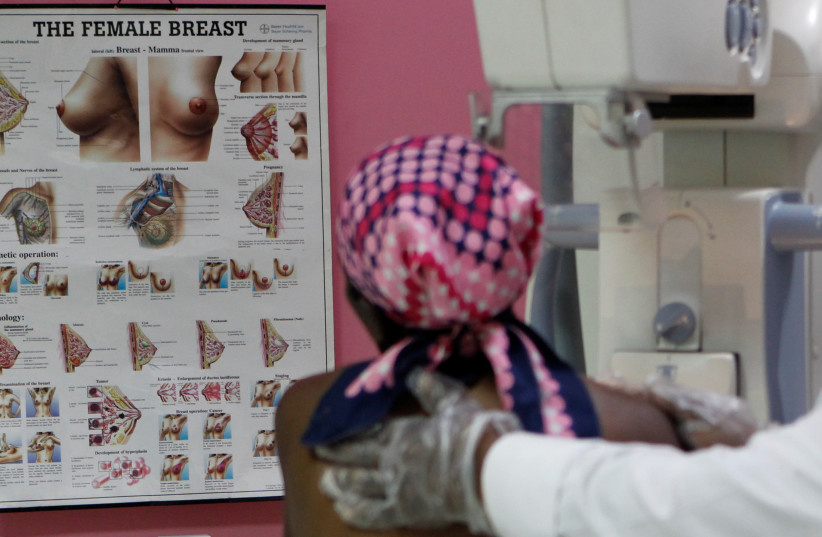Half of all women will experience at least one false-positive result from a yearly breast cancer screening after a decade, a new study published on March 25 has found.
The peer-reviewed study published on JAMA Network Open and entitled “Cumulative Probability of False-Positive Results After 10 Years of Screening With Digital Breast Tomosynthesis vs Digital Mammography,” examined and compared the probability of receiving at least one false-positive result after 10 years of breast cancer screening with two different methods – digital mammography and digital breast tomosynthesis (DBT).
What are the two methods of detection?
Mammography became the commonly used method to detect breast cancer in the late 1960s. It traditionally involves using a dedicated mammography unit to compress the breast. Parallel-plate compression evens out the thickness of breast tissue to increase image quality by reducing the thickness of tissue that X-rays must penetrate, allowing for clearer image quality.
Digital mammography differs in that it uses digital receptors and computers instead of X-ray film to help examine breast tissue for breast cancer.
The other method of detection, DBT, or 3D mammography, is relatively new and was only approved for use by the Food and Drug Administration in 2011. DBT uses a technology that creates a 3D image of the breast using X-rays. While this method is seen as more advanced, a downside is that it more than doubles the radiation exposure of the person undergoing a screening.
How common are false positives?
Overall, with all mammography methods, false positives are common. According to the study, 12% of all patients who undergo digital mammography screenings are called back for additional examinations due to unclear results. Of that number, only 4.4%, or 0.5% overall, actually end up being diagnosed with breast cancer. A study conducted by the Breast Cancer Surveillance Consortium in 2006 showed that after being screened every year for a decade, 61% of women ages 40-59 would experience at least one false-positive result.
Based on this statistic, the study, led by Diana Miglioretti, professor and division chief of biostatistics at the UC Davis Department of Public Health Sciences, aimed to determine which mammography method is associated with the high number of false positives, thereby presenting a viable way for this number to be reduced in the future.
The research team began by collecting data on both digital mammograms and DBT screening examinations conducted between January 1, 2005, and December 31, 2018, all conducted on women ages 40-79 at 126 different medical facilities across the US.
Mammograms and examinations in women with a history of breast cancer were disregarded, as well as any first-time screenings, focusing only on routine yearly checkups conducted a minimum of nine months after an initial screening. The final study was conducted using data from 903,495 women, who between them had a total of 2,969,055 breast cancer screening examinations.
Following the selection of candidates for the study, data analysis was carried out by the research team between the months of February and September 2021. They evaluated the screening method, length of time between screenings, and the age and breast density of each woman.
Which method is more reliable?
It estimated the cumulative risk that a woman would receive at least one false-positive recall over 10 years of annual or biennial (every other year) screening. It also assessed the risks of a false positive that resulted in a recommendation to repeat imaging within six months (short-interval follow-up) and separately, in a biopsy recommendation.
The study’s authors then estimated the cumulative risk that a woman would receive at least one false-positive recall over 10 years of screenings conducted either every year or every other year. They also examined the risks of a false positive that resulted in a recommendation to undergo another screening, as well as recommendations to undergo a biopsy.
The study’s results indicated that over a 10-year period of annual screening, 56% of women will receive a false positive when examined using digital mammography technology. 18% overall were called in for additional mammography shortly after, and 12% overall were recommended to undergo a biopsy.
In contrast, the number of women experiencing a false positive after undergoing a DBT examination was lower, standing at 50%. The number of women called in for a follow-up or a biopsy was relatively the same though, measuring at 17% and 11% respectively.
Regardless of the type of screening, false positives were discovered to be less liikely in older women compared to younger women. The researchers also discovered that false positives were less likely to occur in women undergoing examinations once every other year rather than once a year.
The study concluded that DBT exams lower the risk of false positives by 6.7% compared to digital mammography examinations when done annually, and by 2.4% when conducted biannually. While early breast cancer detection is a key strategy for decreasing cancer morbidity and mortality, false-positive results can lead to unnecessary costs and increased anxiety for patients. Understanding the factors behind false positives can help to reduce the number of them going forward.
“Findings from our study highlight the importance of patient-provider discussions around personalized health,” study co-author Michael Bissell in a discussion on the topic. “It is important to consider a patient’s preferences and risk factors when deciding on screening interval and modality.”

